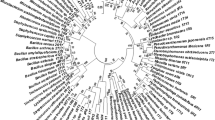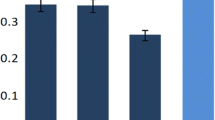Abstract
Sub-inhibitory concentrations of antibiotics, which are found in environmental water systems and sewage plants due to an increased use in therapeutical and preventive fields, influence bacterial behavior in biofilms. The application of sulfamethoxazole, erythromycin, and roxithromycin induced changes in biofilm dynamics regarding biomass formation, spatial structure and specific gene expression in different Pseudomonas aeruginosa isolates. Exposing multi-resistant environmental isolated strains for 17 h to environmental concentrations of antibiotics or wastewater, directly, an increase in biofilm biomass and thickness could be observed for each strain. Additionally, multi-resistant strains responded to the applied growth conditions with changes in transcriptional activity. Here, sub-inhibitory concentrations of macrolides specifically upregulated expression of quorum sensing genes (rhlR, lasI), whereas sulfonamides and municipal wastewater, instead upregulated expression of specific resistant genes (sul1) and efflux pumps (mexD). Antibiotic sensitive isolates demonstrated an overall higher transcriptionally activity, but did not show a specific gene response to the applied exogenous stimuli. Furthermore, the presence of low concentrated antibiotics induced also phenotypical change in the biofilm architecture observed by 3D-imaging.




Similar content being viewed by others
References
Barken KB, Pamp SJ, Yang L, Gjermansen M, Bertrand JJ, Klausen M, Givskov M, Whitchurch CB, Engel JN, Tolker-Nielsen T (2008) Roles of type IV pili, flagellum-mediated motility and extracellular DNA in the formation of mature multicellular structures in Pseudomonas aeruginosa biofilms. Environ Microbiol 10(9):2331–2343. doi:10.1111/j.1462-2920.2008.01658.x
Berney M, Weilenmann HU, Ihssen J, Bassin C, Egli T (2006) Specific growth rate determines the sensitivity of Escherichia coli to thermal, UVA, and solar disinfection. Appl Environ Microbiol 72(4):2586–2593. doi:10.1128/AEM.72.4.2586-2593.2006
Breidenstein EB, de la Fuente-Nunez C, Hancock RE (2011) Pseudomonas aeruginosa: all roads lead to resistance. Trends Microbiol 19(8):419–426. doi:10.1016/j.tim.2011.04.005S0966-842X(11)00086-2
Davies J, Spiegelman GB, Yim G (2006) The world of subinhibitory antibiotic concentrations. Curr Opin Microbiol 9(5):445–453. doi:10.1016/j.mib.2006.08.006
Ellington MJ, Woodford N (2006) Fluoroquinolone resistance and plasmid addiction systems: self-imposed selection pressure? J Antimicrob Chemother 57(6):1026–1029. doi:10.1093/jac/dkl110
Erdos G, Sayeed S, Hu FZ, Antalis PT, Shen K, Hayes JD, Ahmed AI, Johnson SL, Post JC, Ehrlich GD (2006) Construction and characterization of a highly redundant Pseudomonas aeruginosa genomic library prepared from 12 clinical isolates: application to studies of gene distribution among populations. Int J Pediatr Otorhinolaryngol 70(11):1891–1900. doi:10.1016/j.ijporl.2006.06.016
Goh EB, Yim G, Tsui W, McClure J, Surette MG, Davies J (2002) Transcriptional modulation of bacterial gene expression by subinhibitory concentrations of antibiotics. Proc Natl Acad Sci U S A 99(26):17025–17030. doi:10.1073/pnas.252607699
Hancock RE, Carey AM (1979) Outer membrane of Pseudomonas aeruginosa: heat- 2-mercaptoethanol-modifiable proteins. J Bacteriol 140(3):902–910
Heberer T, Massmann G, Fanck B, Taute T, Dunnbier U (2008) Behaviour and redox sensitivity of antimicrobial residues during bank filtration. Chemosphere 73(4):451–460. doi:10.1016/j.chemosphere.2008.06.056
Hellemans J, Mortier G, De Paepe A, Speleman F, Vandesompele J (2007) qBase relative quantification framework and software for management and automated analysis of real-time quantitative PCR data. Genome Biol 8(2):R19. doi:10.1186/gb-2007-8-2-r19
Heydorn A, Nielsen AT, Hentzer M, Sternberg C, Givskov M, Ersboll BK, Molin S (2000) Quantification of biofilm structures by the novel computer program COMSTAT. Microbiology 146(Pt 10):2395–2407
Hirsch R, Ternes T, Haberer K, Kratz KL (1999) Occurrence of antibiotics in the aquatic environment. Sci Total Environ 225(1–2):109–118
Hoffman LR, D'Argenio DA, MacCoss MJ, Zhang Z, Jones RA, Miller SI (2005) Aminoglycoside antibiotics induce bacterial biofilm formation. Nature 436(7054):1171–1175. doi:10.1038/nature03912
Karunakaran E, Mukherjee J, Ramalingam B, Biggs CA (2011) "Biofilmology": a multidisciplinary review of the study of microbial biofilms. Appl Microbiol Biotechnol 90(6):1869–1881. doi:10.1007/s00253-011-3293-4
Kayama S, Murakami K, Ono T, Ushimaru M, Yamamoto A, Hirota K, Miyake Y (2009) The role of rpoS gene and quorum-sensing system in ofloxacin tolerance in Pseudomonas aeruginosa. FEMS Microbiol Lett 298(2):184–192. doi:10.1111/j.1574-6968.2009.01717.x
Kummerer K (2009) Antibiotics in the aquatic environment–a review–part II. Chemosphere 75(4):435–441. doi:10.1016/j.chemosphere.2008.12.006
Linares JF, Gustafsson I, Baquero F, Martinez JL (2006) Antibiotics as intermicrobial signaling agents instead of weapons. Proc Natl Acad Sci U S A 103(51):19484–19489. doi:10.1073/pnas.0608949103
Marcus IM, Herzberg M, Walker SL, Freger V (2012) Pseudomonas aeruginosa attachment on QCM-D sensors: the role of cell and surface hydrophobicities. Langmuir 28(15):6396–6402. doi:10.1021/la300333c
Nalca Y, Jansch L, Bredenbruch F, Geffers R, Buer J, Haussler S (2006) Quorum-sensing antagonistic activities of azithromycin in Pseudomonas aeruginosa PAO1: a global approach. Antimicrob Agents Ch 50(5):1680–1688. doi:10.1128/AAC.50.5.1680-1688.2006
O'Toole GA, Kolter R (1998) Flagellar and twitching motility are necessary for Pseudomonas aeruginosa biofilm development. Mol Microbiol 30(2):295–304
Oh H, Stenhoff J, Jalal S, Wretlind B (2003) Role of efflux pumps and mutations in genes for topoisomerases II and IV in fluoroquinolone-resistant Pseudomonas aeruginosa strains. Microb Drug Resist 9(4):323–328. doi:10.1089/107662903322762743
Pasmore M, Todd P, Smith S, Baker D, Silverstein J, Coons D, Bowman CN (2001) Effects of ultrafiltration membrane surface properties on Pseudomonas aeruginosa biofilm initiation for the purpose of reducing biofouling. J Membrane Sci 194(1):15–32
Pompilio A, Catavitello C, Picciani C, Confalone P, Piccolomini R, Savini V, Fiscarelli E, D'Antonio D, Di Bonaventura G (2010) Subinhibitory concentrations of moxifloxacin decrease adhesion and biofilm formation of Stenotrophomonas maltophilia from cystic fibrosis. J Med Microbiol 59(Pt 1):76–81. doi:10.1099/jmm.0.011981-0
Savli H, Karadenizli A, Kolayli F, Gundes S, Ozbek U, Vahaboglu H (2003) Expression stability of six housekeeping genes: A proposal for resistance gene quantification studies of Pseudomonas aeruginosa by real-time quantitative RT-PCR. J Med Microbiol 52(Pt 5):403–408
Schaber JA, Hammond A, Carty NL, Williams SC, Colmer-Hamood JA, Burrowes BH, Dhevan V, Griswold JA, Hamood AN (2007) Diversity of biofilms produced by quorum-sensing-deficient clinical isolates of Pseudomonas aeruginosa. J Med Microbiol 56(Pt 6):738–748. doi:10.1099/jmm.0.47031-0
Schwartz T, Volkmann H, Kirchen S, Kohnen W, Schon-Holz K, Jansen B, Obst U (2006) Real-time PCR detection of Pseudomonas aeruginosa in clinical and municipal wastewater and genotyping of the ciprofloxacin-resistant isolates. FEMS Microbiol Ecol 57(1):158–167. doi:10.1111/j.1574-6941.2006.00100.x
Selezska K, Kazmierczak M, Musken M, Garbe J, Schobert M, Haussler S, Wiehlmann L, Rohde C, Sikorski J (2012) Pseudomonas aeruginosa population structure revisited under environmental focus: impact of water quality and phage pressure. Environ Microbiol 14(8):1952–1967. doi:10.1111/j.1462-2920.2012.02719.x
Shen L, Shi Y, Zhang D, Wei J, Surette MG, Duan K (2008) Modulation of secreted virulence factor genes by subinhibitory concentrations of antibiotics in Pseudomonas aeruginosa. J Microbiol 46(4):441–447. doi:10.1007/s12275-008-0054-x
Shrout JD, Chopp DL, Just CL, Hentzer M, Givskov M, Parsek MR (2006) The impact of quorum sensing and swarming motility on Pseudomonas aeruginosa biofilm formation is nutritionally conditional. Mol Microbiol 62(5):1264–1277. doi:10.1111/j.1365-2958.2006.05421.x
Silby MW, Winstanley C, Godfrey SA, Levy SB, Jackson RW (2011) Pseudomonas genomes: diverse and adaptable. FEMS Microbiol Rev 35(4):652–680. doi:10.1111/j.1574-6976.2011.00269.x
Skindersoe ME, Alhede M, Phipps R, Yang L, Jensen PO, Rasmussen TB, Bjarnsholt T, Tolker-Nielsen T, Hoiby N, Givskov M (2008) Effects of antibiotics on quorum sensing in Pseudomonas aeruginosa. Antimicrob Agents Ch 52(10):3648–3663. doi:10.1128/AAC.01230-07
Skold O (2000) Sulfonamide resistance: mechanisms and trends. Drug Resist Updat 3(3):155–160. doi:10.1054/drup.2000.0146
Srinandan CS, D'Souza G, Srivastava N, Nayak BB, Nerurkar AS (2012) Carbon sources influence the nitrate removal activity, community structure and biofilm architecture. Bioresour Technol 117:292–299. doi:10.1016/j.biortech.2012.04.079
Tateda K, Comte R, Pechere JC, Kohler T, Yamaguchi K, Van Delden C (2001) Azithromycin inhibits quorum sensing in Pseudomonas aeruginosa. Antimicrob Agents Ch 45(6):1930–1933. doi:10.1128/AAC.45.6.1930-1933.2001
Tateda K, Ishii Y, Matsumoto T, Kobayashi T, Miyazaki S, Yamaguchi K (2000) Potential of macrolide antibiotics to inhibit protein synthesis of Pseudomonas aeruginosa: suppression of virulence factors and stress response. J Infect Chemother 6(1):1–7. doi:10.1007/s101560000013
Tin S, Sakharkar KR, Lim CS, Sakharkar MK (2009) Activity of Chitosans in combination with antibiotics in Pseudomonas aeruginosa. Int J Biol Sci 5(2):153–160
Wiegand I, Hilpert K, Hancock RE (2008) Agar and broth dilution methods to determine the minimal inhibitory concentration (MIC) of antimicrobial substances. Nat Protoc 3(2):163–175. doi:10.1038/nprot.2007.521
Williams P, Camara M (2009) Quorum sensing and environmental adaptation in Pseudomonas aeruginosa: a tale of regulatory networks and multifunctional signal molecules. Curr Opin Microbiol 12(2):182–191. doi:10.1016/j.mib.2009.01.005
Wozniak DJ, Keyser R (2004) Effects of subinhibitory concentrations of macrolide antibiotics on Pseudomonas aeruginosa. Chest 125 (2 Suppl):62S-69S; quiz 69S
Yeung O, Law SP, Yau M (2009) Treatment generalization and executive control processes: preliminary data from Chinese anomic individuals. Int J Lang Commun Disord 44(5):784–794. doi:10.1080/13682820902929081
Yoneda K, Chikumi H, Murata T, Gotoh N, Yamamoto H, Fujiwara H, Nishino T, Shimizu E (2005) Measurement of Pseudomonas aeruginosa multidrug efflux pumps by quantitative real-time polymerase chain reaction. FEMS Microbiol Lett 243(1):125–131. doi:10.1016/j.femsle.2004.11.048
Acknowledgments
We thank the Karlsruhe Institute of Technology KIT for supporting this study and the development team of COMSTAT2 for providing the software.
Author information
Authors and Affiliations
Corresponding author
Additional information
Responsible editor: Robert Duran
Rights and permissions
About this article
Cite this article
Bruchmann, J., Kirchen, S. & Schwartz, T. Sub-inhibitory concentrations of antibiotics and wastewater influencing biofilm formation and gene expression of multi-resistant Pseudomonas aeruginosa wastewater isolates. Environ Sci Pollut Res 20, 3539–3549 (2013). https://doi.org/10.1007/s11356-013-1521-4
Received:
Accepted:
Published:
Issue Date:
DOI: https://doi.org/10.1007/s11356-013-1521-4




